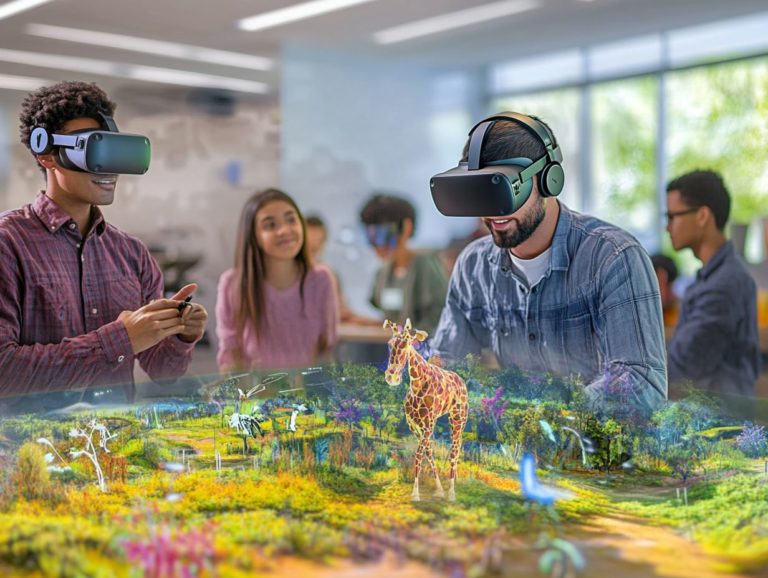understanding field of view in vr
In the realm of virtual reality (VR), the concept of Field of View (FoV) is essential for crafting truly immersive experiences. It dictates the extent of the virtual environment you can perceive at any given moment, significantly affecting both realism and your overall satisfaction.
This article delves into the importance of FoV in VR, the various factors that influence it, and practical strategies for optimizing your experience.
By grasping and enhancing FoV, you can take your virtual adventures to unprecedented levels. Get ready to explore everything you need to know about this critical element of VR technology!
Contents
Key Takeaways:
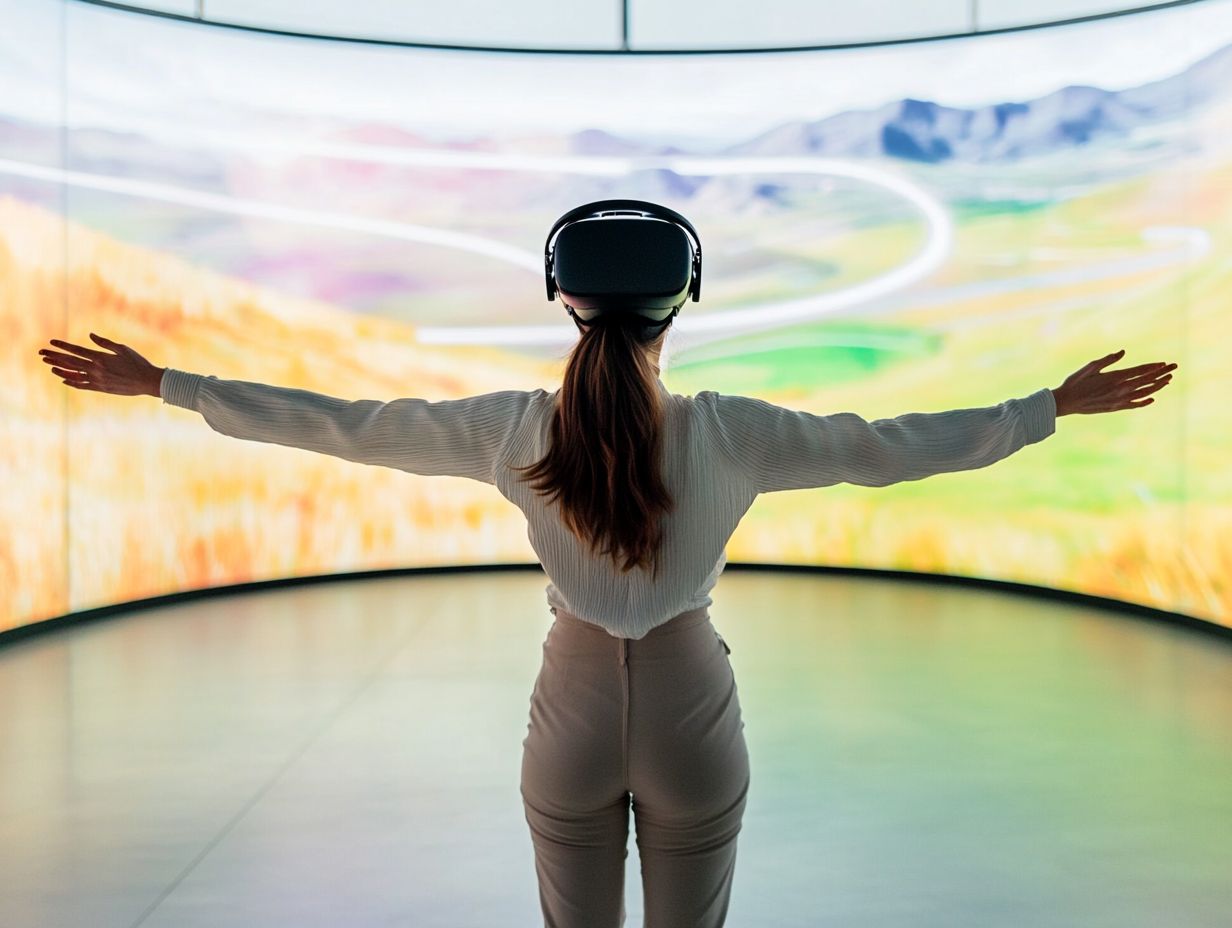
- Understanding the Field of View is crucial for enhancing immersion and realism in VR experiences.
- Hardware and software limitations can affect the Field of View in VR, but adjustments can be made to optimize it.
- Field of View can be measured and described using specific units and is an important factor in optimizing the overall VR experience.
Defining Field of View
Field of View (FoV) is an important part of visual perception. It defines the extent of your observable environment while wearing a VR headset. In virtual and augmented reality, FoV is crucial for crafting an immersive experience that closely mirrors human eye perception.
A wider FoV allows you to take in more of your surroundings, mimicking the natural peripheral vision inherent to humans. This consideration is especially significant when exploring how various VR headsets like the Pimax series, Oculus models, and HTC Vive impact your overall experience.
Each headset presents different FoV specifications. These specifications directly influence how immersed you feel in the virtual environment. The geometry of the lenses used in these devices is vital; well-crafted lenses can significantly reduce distortions and enhance clarity.
Therefore, optimizing FoV and lens quality becomes essential for maximizing your engagement and comfort in both virtual and augmented realities.
Importance of Field of View in VR
The importance of Field of View (FoV) in virtual reality is paramount, as it profoundly influences your immersion and overall experience. A wider FoV enhances your ability to engage fully with immersive worlds, creating a more natural and comfortable visual experience.
A wider FoV reduces the risk of motion sickness that can accompany restricted viewing angles. This allows you to enjoy your virtual adventures with greater ease and satisfaction.
Enhancing Immersion and Realism
Enhancing immersion and realism in virtual environments hinges on accurate FoV measurement. This plays a crucial role in how effectively you engage with your surroundings.
When FoV settings are properly optimized, they create a sense of presence that transforms simple interactions into richly realistic experiences through advanced rendering techniques.
As developers fine-tune the FoV, they consider various rendering techniques that impact visual fidelity and responsiveness. A wider FoV enhances your spatial awareness, allowing you to perceive your environment more naturally and react in real time.
As rendering techniques continue to advance, the integration of elements like dynamic lighting and spatial audio with an optimized FoV becomes essential for crafting captivating experiences. This synergy not only pulls you deeper into the virtual realm but also strengthens emotional connections, leading to greater engagement and satisfaction with your overall VR experience.
Experiment with your VR settings to enhance your experiences and fully immerse yourself in virtual worlds!
Impact on User Experience
The impact of Field of View (FOV) on your experience in virtual reality (VR) is profound. It affects your comfort level, visual clarity, and how you perceive angles.
When FOV is well-calibrated, it can enhance your satisfaction by minimizing image artifacts. This creates a seamless visual experience, allowing you to navigate virtual environments with ease.
If the FOV is too narrow or too wide, it can lead to discomfort and distractions. This breaks the immersive spell that VR aims to create. Poorly set FOV parameters might introduce distortions or blurriness at the edges, making it hard to focus on important details. This can seriously reduce usability and leave you feeling disoriented or even nauseated during long sessions.
Understanding the importance of appropriate FOV settings is crucial for both developers and users. It ensures an optimal VR experience that keeps you engaged and satisfied.
Factors Affecting Field of View
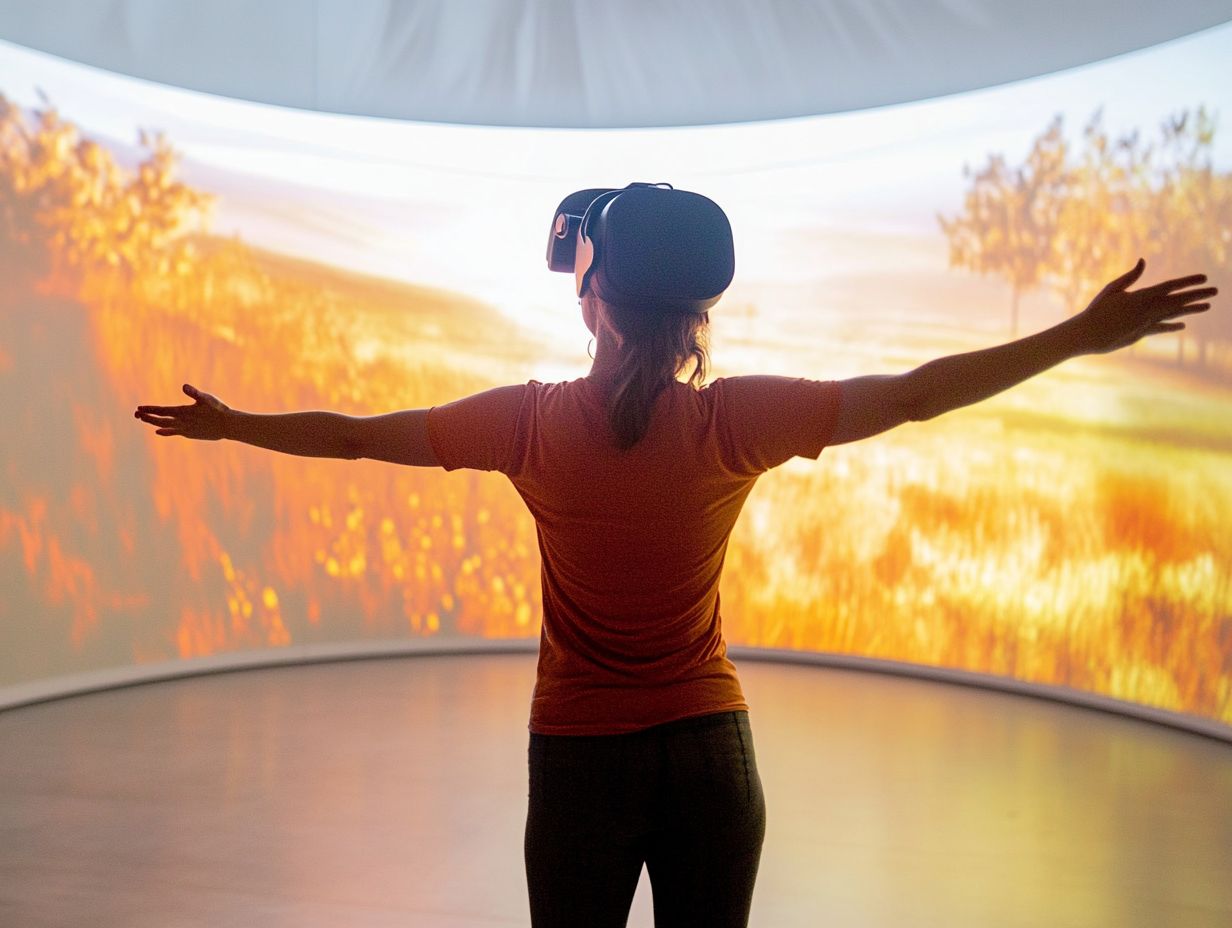
Several factors influence the Field of View (FOV) in virtual reality, including hardware limitations and software optimization.
These elements directly impact the adjustable FOV settings available. Recognizing these factors is essential for improving the performance of VR headsets like the Pimax Crystal and Valve Index.
By optimizing lens aperture and design, you can elevate your immersive experience.
Hardware and Software Limitations
Hardware and software limitations significantly influence the effective Field of View (FOV) you can achieve with various VR headsets. Factors such as optical systems, headset specifications, and software optimization can restrict FOV capabilities, affecting your user experience and immersion.
Take the Pimax series, for instance. While it strives to offer an expansive FOV, its performance can be hindered by hardware constraints like resolution and frame rate. This can detract from the overall realism. The Oculus lineup, known for its user-friendliness, may not deliver the same level of immersion due to its narrower FOV specifications.
Innovative software optimization techniques, like dynamic resolution scaling and improved tracking algorithms, can alleviate some of these limitations. By refining the rendering pipeline and minimizing latency, developers can enhance your perceived FOV, allowing for a more immersive experience.
Adjusting Field of View in VR
You must adjust the Field of View (FOV) in VR to maximize your comfort and enjoyment! It often requires careful optical calibration and an understanding of lens geometry.
Begin by familiarizing yourself with the specific FOV options in your VR headset settings. Experimenting with both narrow and wide FOV configurations will help you discover what feels most natural.
Aligning your lenses according to the distance between your eyes is crucial. This simple step can significantly reduce visual strain and distortion. Proper calibration enhances immersion and fosters a stable perception of depth, making your gaming or simulation experience enjoyable.
By making iterative adjustments based on your comfort, you can unlock significant improvements in your overall satisfaction.
Measuring and Describing Field of View
Measuring and describing Field of View (FOV) is crucial for understanding the performance of different VR headsets, as it directly influences visual fidelity and the immersive experience. For more insights, check out understanding VR resolution: what matters?
Accurate FOV measurement, usually expressed in pixels per degree, provides insights into how effectively headsets like the Pimax 8KX and Varjo deliver engaging visual experiences.
Understanding these metrics enables you to make informed decisions about which headset will elevate your virtual reality journey.
Have you ever felt discomfort while using VR? Let s explore how FOV adjustments can help!
Take the time to adjust your settings today for a better VR experience!
Units of Measurement
Units of measurement for Field of View (FOV) are essential for evaluating the visual clarity of headsets. Pixels per degree is a key metric that indicates the effectiveness of display technology. This measurement helps you understand how well a headset can replicate real-world experiences.
Other important units, such as degrees of FOV and horizontal versus vertical measurements, also significantly influence your sense of immersion. A wider FOV offers a more expansive view, enhancing the feeling of truly being present in a virtual environment.
It s crucial to recognize that higher pixel density helps reduce the screen-door effect this is the grid-like pattern that can appear on screens, reducing visual quality. Understanding these metrics helps you make informed headset choices. It also influences developers in their design processes, shaping your overall experience and satisfaction in VR applications.
Describing Field of View in VR Headsets
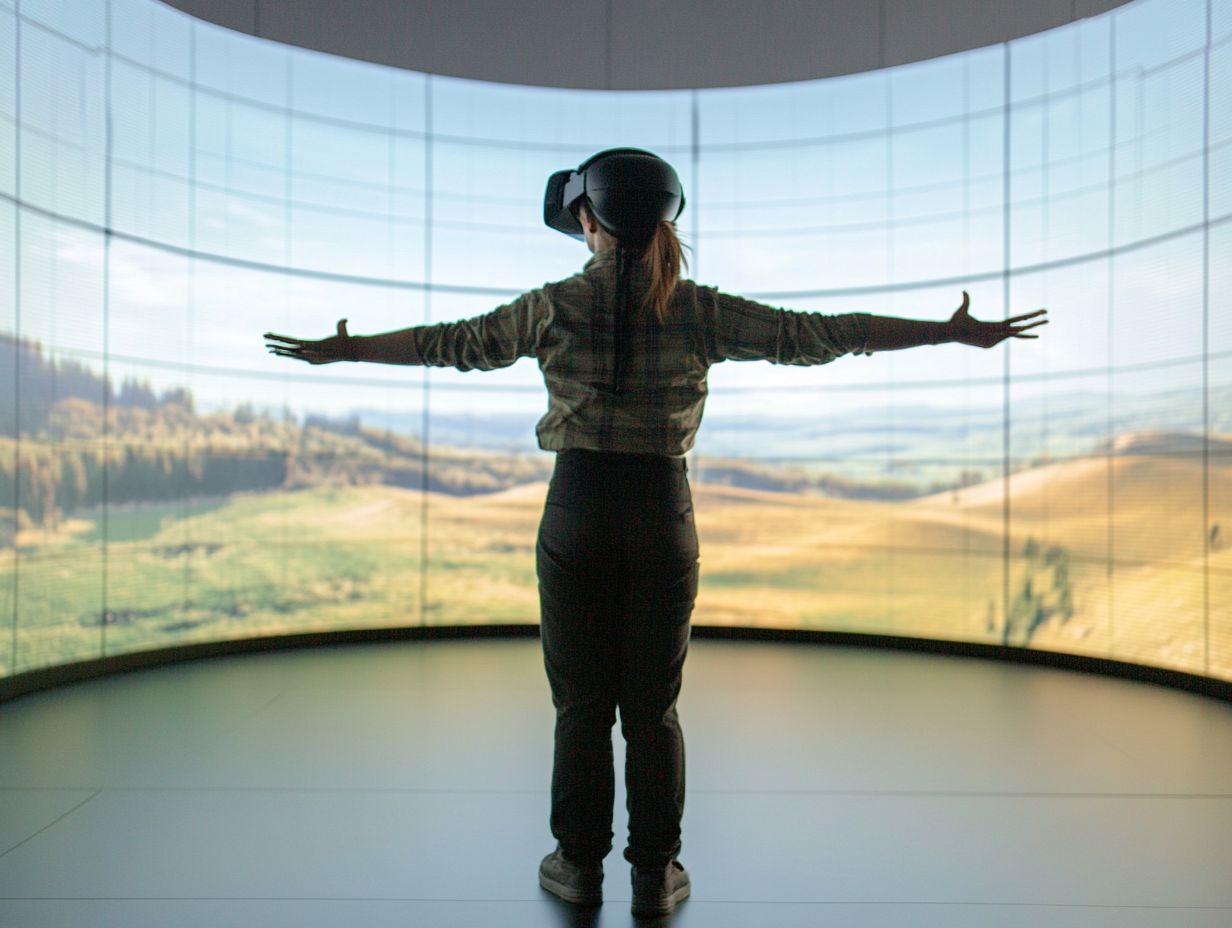
Describing the Field of View in VR headsets requires a closer look at the specifications that directly impact visual fidelity and the immersive experience. Critical factors, such as lens geometry and the design of lens systems, significantly shape how you perceive your virtual surroundings.
Take the Valve Index, for example. It boasts an impressive FOV of 130 degrees, making you feel truly enveloped by your virtual environments. This expansive view elevates your sense of immersion and spatial awareness, allowing you to engage more fully with the virtual world.
On the other hand, while the HTC Vive offers a commendable experience, its slightly narrower FOV may influence how you perceive depth in VR. Understanding these specifications enables you to select the right headset for your needs, ensuring you embark on a visually stunning and captivating journey into the realms of virtual reality.
Optimizing Field of View for VR
Optimizing your Field of View (FOV) in VR is essential to take your experience to the next level of engagement and comfort. It significantly influences the immersive experience that VR technologies offer.
By adopting targeted strategies and tips, you can enhance your FOV, crafting a virtual environment that aligns perfectly with your preferences and maximizes enjoyment.
Tips for Improving Field of View
Improving your Field of View (FOV) involves a blend of user comfort tweaks and precise optical calibration, all aimed at elevating your headset’s performance. By focusing on key elements like lens geometry and FOV settings, you can significantly enhance your VR experience while minimizing discomfort.
Start by diving into your headset settings. Adjusting the FOV slider can create a more immersive environment tailored to your personal preferences. Calibrating the lenses is essential, as it helps eliminate distortions and ensures crystal-clear visuals.
You should also consider using custom padding that fits your face. This can greatly enhance comfort during long sessions. Additionally, using external tracking sensors can boost your spatial awareness and reduce any motion sickness that might arise from a narrow FOV.
By incorporating these strategies, you not only enhance your visual engagement but also foster a more enjoyable and seamless virtual journey.
Frequently Asked Questions
What is the field of view in VR?
The field of view in VR refers to how much of the environment you can see through a VR headset. It is typically measured in degrees and determines how immersive and realistic the VR experience will be.
How does the field of view affect the VR experience?
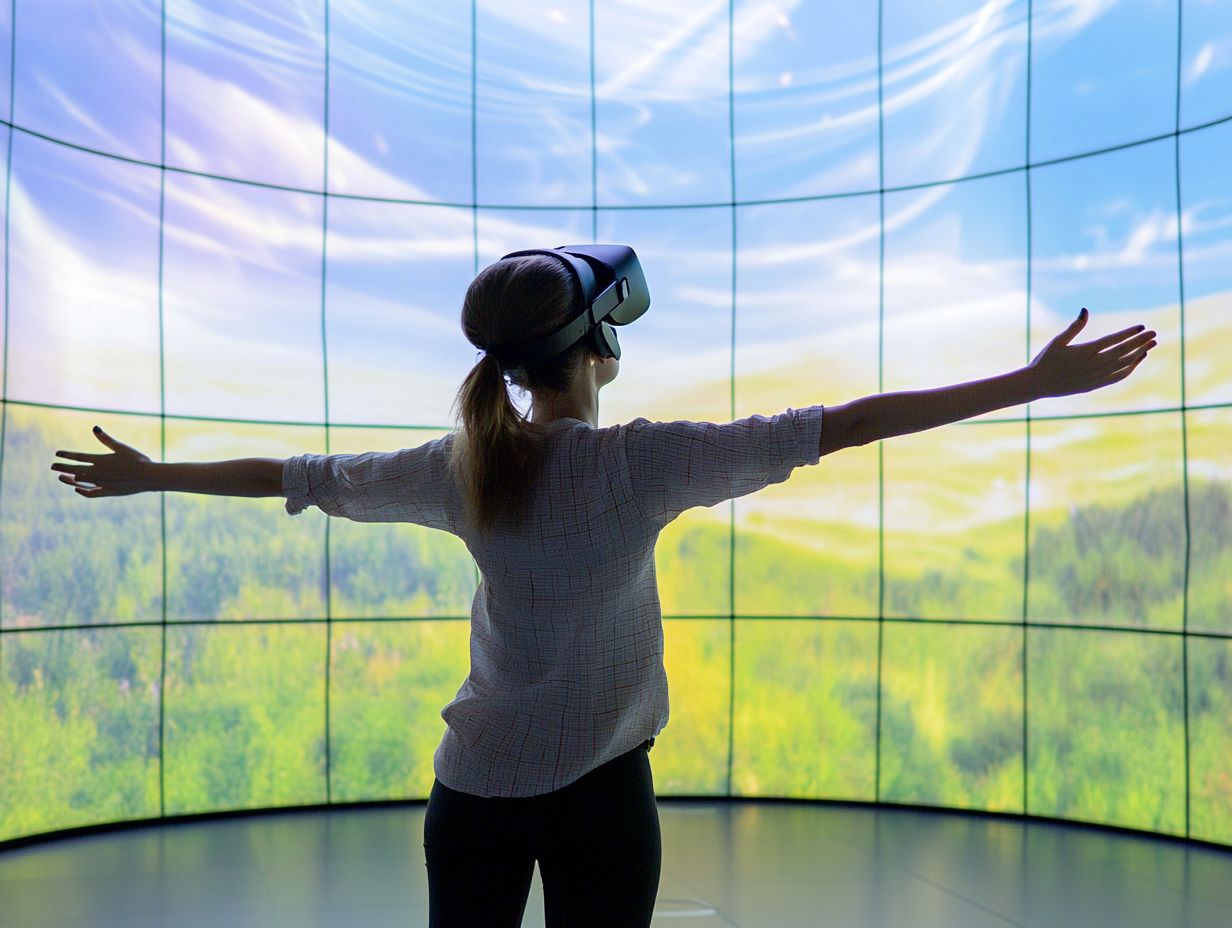
The field of view plays a crucial role in creating a realistic and immersive virtual environment. A wider field of view helps trick the brain into believing that it is in a different environment, resulting in a more immersive experience.
What is the ideal field of view for a VR headset?
The ideal field of view for a VR headset is between 100-110 degrees. This range has been found to provide a balance between immersion and comfort. Anything below 90 degrees may result in a less immersive experience, while a field of view above 110 degrees can cause motion sickness and discomfort.
How Does the Field of View Differ from Resolution in VR?
The field of view and resolution are key aspects of VR technology.
The field of view defines how much you can see, while resolution determines how clear those images are. A higher resolution improves clarity but doesn t change the field of view.
Does the Field of View Differ Between Different VR Headsets?
Yes, different VR headsets have varying fields of view.
Some headsets offer a wider or narrower view, which impacts your overall experience. Make sure to dive into research before your next headset purchase!
Can the Field of View Be Adjusted in VR?
Some VR headsets let you adjust the field of view to fit your preferences.
However, changing it can impact visual quality and may even cause motion sickness. It’s best to keep it within the ideal range for an optimal experience.


